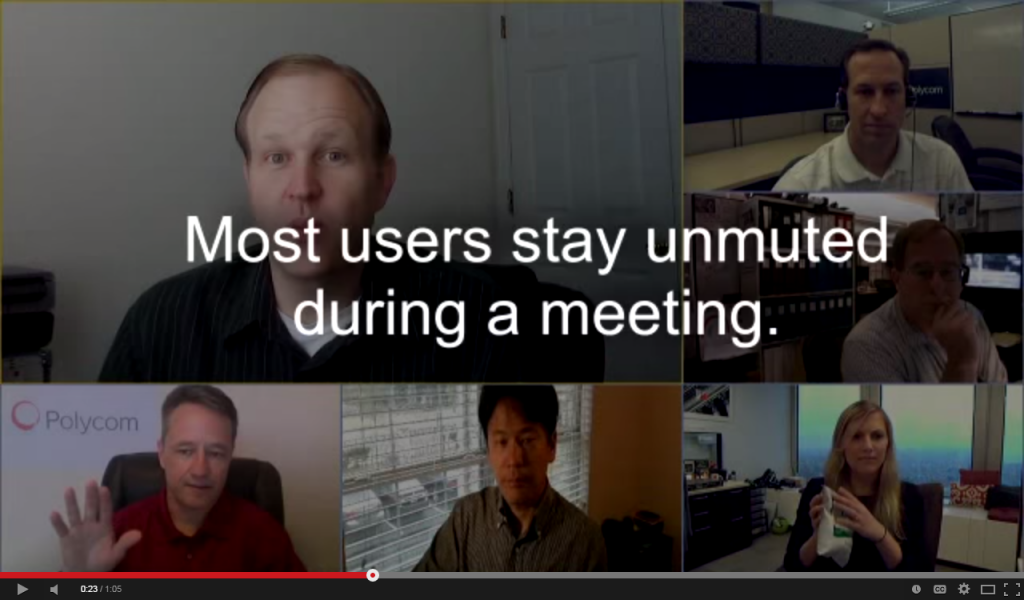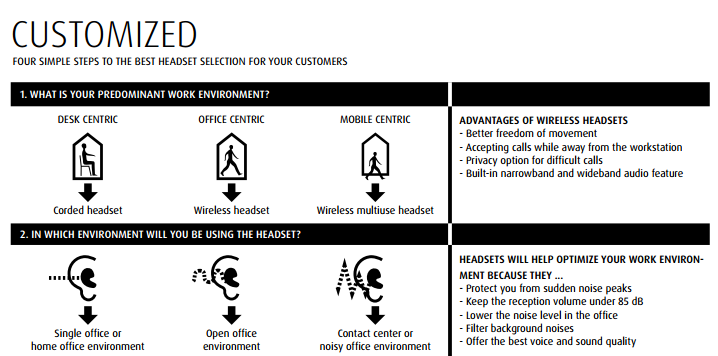Become a Beta Tester for Grandstream IP Technologies
Grandstream is looking for early adopters of IP technologies. (more…)

Grandstream is looking for early adopters of IP technologies. (more…)
There’s a long list of stadiums, arenas, convention centers, theatres, and recreational centers in the United States, Canada, United Kingdom, and Germany that use Ruckus Wireless for their public Wi-Fi systems.
The video above shows the success that Major League Baseball’s Los Angeles Angels have had using Ruckus to enhance their fan’s gameday experience.
Use Wi-Fi to increase operational efficiencies throughout a stadium that holds 45,574 people.
Free Wi-Fi access is not only helping to attract and retain fans, but the stadium is also using it for mobile food concessions including wireless-enabled cash registers and handheld point of sale devices to speed up transactions.
The stadium also plans to add handheld ticket barcode scanners to this Ruckus network for ticket processing.
John Clarey, CEO of 5 Bars, the company that owns and operates the Ruckus Wi-Fi network within the Angels stadiums said that:
Not only is sophisticated Ruckus technology like BeamFlex™ ideally suited for providing Wi-Fi to Angel Stadium, it requires deploying less APs in order to provide reliable coverage over the same area, compared with other vendors like Cisco, so it was an easy choice for us, and one we know will deliver the kind of performance, capacity and reliability both we and our clients demand.
For more application and deployment details, click here: Angel Stadium of Anaheim Takes Ruckus Smart Wi-Fi Out to the Ballgame.

Face it, when you’re on a conference call you’re either zoning out to enjoy a few moments of meditation or you’re doing something else entirely.
The Harvard Business Review article, What People Are Really Doing When They’re on a Conference Call, explains that, “It turns out many U.S. employees would rather do just about anything rather than listen intently to their coworkers from a remote location.”
Inevitably, just as you began to successfully tune out everyone else on the call you get distracted by another caller’s dog barking in the background or a keyboard clacking away.
Who needs that?
Introducing Polycom NoiseBlock, “a new feature on the Polycom RealPresence Collaboration Server that removes distracting noise from meeting conversations so everyone can be heard clearly – and people don’t have to mute themselves,” says Laura Shay at Polycom.
Of course, it’s harder to get away with doing other work or eating while on a video call but at least with NoiseBlock you can’t be accused of interrupting anyone.

The Cisco Unified Communications Series for Small Business, specifically the UC300 and UC500 device series, have reached end-of-life (EoL) status.
Support for these platforms began phasing out on January 1, 2015.
Digium is currently offering a promotion to help you switch from Cisco to a Switchvox UC platform.
For many customers, a Switchvox solution can be purchased for less than the annual cost of a Cisco support contract.
Promotion Details
Unified Communications Appliances
VoIP Phones
If you’re looking for a Jabra headset for a Cisco phone, check out this Jabra – Cisco Compatibility Guide that outlines:
In addition to Cisco SPA and Unified IP Phones, this handy guide lists connectivity options for Cisco Jabber softphones, WebEx, and Cisco wireless handsets.
You’re able to quickly find which connector cable you need, if there’s a USB connection, Electronic Hookswitch (EHS) capabilities, or if there’s remote call control (RCC) for your headset / phone pairing.

Four simple steps to the best headset selection
And if you’re unsure what type of headset you need for your work environment, just follow Jabra’s four steps to headset selection.
Download: Jabra – Cisco Compatibility Guide

Custom VoIP lab at VoIP Supply is starting to take shape.
Coming soon to VoIP Supply is a brand new VoIP lab.
It may be hard to see from the picture above but that’s a custom hardwood table hand-built by the father of our CEO, Ben Sayers.
This will be a fully interactive lab with VoIP phones, headsets, PBX’s, gateways, and more from every brand that we carry. That way, when you call in asking about compatibility issues or solution suggestions, we’ll be able to more easily run tests for you and share our experience.
There’s a lot more to come in 2015 and we’ll keep you updated.
Happy New Year, everyone.
Thanks to all of our wonderful, loyal customers, we’ve had another great year here at VoIP Supply.
As our way of returning the favor we’d like to pass along some VoIP Holiday Specials.
Going on now until December 31, 2014 there are limited quantities available for these deals on top brands like Aastra, Cisco, Grandstream, Jabra, Plantronics on devices such as:
If you need help or have any questions about availability, talk to one of our friendly reps by calling toll-free 800-398-8647

Peter Radizeski presenting at Ignite Tampa 2013
In this next installment of our VoIP Blogger Interview Series, we get the perspective of another industry veteran, Peter Radizeski (@radinfo) who has two blogs and runs his own telecom sales and marketing consulting firm, RAD-INFO, Inc.
The bio on his website says, “His honest and direct approach make him a refreshing speaker.”
You’ll find that to be true in this interview too where he doesn’t hold back his opinions on the technology, the players, and what he’d like to see more of.
VoIP Supply: Tell us a little bit about who you are and what your blogs, On RAD’s Radar and NSP Strategist, aim to provide for your audience.
Peter Radizeski: So I worked for a Novell VAR from 1996 till 1999 doing tech support, building servers, etc. In 1999, a buddy I played volleyball with was closing his GTE telecom agency (due to GTE being acquired by Verizon) and opening a BellSouth agency. I went to work for him selling primarily to ISPs and CLECs. I was full service – router configs, CPE, marketing and sales tips. I figured the more they sold, the more I sold.
This morphed into me doing consulting to service providers in sales, marketing and strategy. My marketing was a weekly newsletter about the industry, books I read, marketing and sales tips, case studies, and what the FCC was up to.

“I think mobile VoIP is the most boring usage out there. You already HAVE VoIP – that’s what a cellular call is.”
This newsletter morphed to the NSP Strategist in June 2004. In 2007, I was blogging for Virgo as an Advisory Board member when Rich Tehrani asked me to blog for TMC, so in 2008 I started blogging On RAD’s Radar about the channel, telecom, and lots of VoIP. On NSP Strategist I write for service providers about strategy, sales and marketing like my newsletter. My latest blog post Outside the Box in CLEC-Land was about four different service providers and the cool stuff they are doing right out – different from everyone else.
When I say strategy, I mean not just transitioning to Hosted PBX. I do webinars on Goal Setting and Sales Planning every year. I have written (and given presentations) about hiring, culture, change, innovation, motivation and management. The telecom executives who read NSP Strategist are getting valuable information on how to run their business.
On my blog on TMC, On RAD’s Radar, readers get a view of the indirect sales channel, VARs, Agents, sales, marketing and a not so grand view of the world of telecom and the carriers.
I also have columns in Cloud Computing Magazine, Internet Telephony Magazine and ChannelVision Magazine.
VS: How did you get started in VoIP?
PR: In 2003, Broadsoft’s second customer signed me as their first agent. I knew VoIP was going to be an opportunity; I just didn’t know it would take 10 years and many starts-and-stops (and even failures) for that to happen.
For my service provider clients who didn’t want to drop the big bucks on a TDM switch, VoIP seemed like a cost effective alternative.
VS: What are your favorite things about VoIP, or some of the creative ways you’ve seen people use the technology?
PR: Kindle Fire support is probably the best VoIP (WebRTC) use case.
I like click-to-call. I would like to see more widgets that enable voice. For example, on Android the way you can click a phone number in an email or web page to dial. That is how it should work.
I think mobile VoIP is the most boring usage out there. You already HAVE VoIP – that’s what a cellular call is. It’s not like these apps are enabling HD Voice or anything extraordinary. VoIP for some is still just arbitrage. It’s the biggest problem with calling it VoIP – the mainstream equates that with low cost dial-tone replacement. It’s the bane of the industry.
How do you compare a free Android app or a Vonage ATA or MagicJack device with a managed Hosted UC deployment?

Radizeski says, “…consolidation should happen a little more often, since there are 2000+ providers of hosted VoIP in the US. It will be fun to watch which players get taken off the table.”
VS: What trends are you seeing now and any predictions for the future?
PR: Well with the TDM to IP transition almost every LEC – ILEC, RLCE, CLEC – has a softswitch and is offering some form of hosted VoIP. Many buyers are aware of Hosted PBX and UC – not by that term, but by capabilities like find-me/follow-me, simulring, voicemail to email (my three favorite features). So adoption should speed up in the SMB space.
Lync/Skype for Biz adds an interesting element of competition to the Broadsoft world, who already had to compete/differentiate from the non-Broadsoft/Asterisk switches, Cisco Call Manager and premise based PBX.
I think Hosted UC will allow smaller companies to spin up a 2 to 4 seat call center with enterprise level software easily. If only the salespeople could figure out that functionality, like that is the reason we have the cloud to begin with (Enterprise level applications easily digestible for SMB on a monthly recurring bill.)
Also, consolidation should happen a little more often, since there are 2000+ providers of hosted VoIP in the US. It will be fun to watch which players get taken off the table.
It will be interesting to see who gives 8×8 and Comcast a run for their money in business hosted VoIP. Vonage might do it with the Telesphere acquisition, but then the Vocalocity buy didn’t pan out like they thought either.
VS: Writers read a lot. What’s on your reading list; websites you love or books you’d highly recommend?
PR: Highly recommend Linchpin by Seth Godin or anything by Seth Godin! Endless Referrals by Bob Berg was one of the first sales books I read. Accidental Salesperson is good. Marketing Outrageously. The Sales Bible by Jeffrey Gitomer. Duct Tape Selling by John Jantsch.
I read Telecom Ramblings, Seth Godin, Rich Tehrani, Nicholas Bates, James Altucher, project Exponential, INC magazine, Forbes, MojoMarketing, ChannelVision Magazine and Channel Partners regularly.
I still check my RSS reader once a month. Blogging has slowed down for many people. My Twitter feed provides too many articles to read in a year – every single day – so my biggest issue is time.
I would suggest that your audience read my latest book, SELLECOM2: Selling Cloud Services available in paperback or Kindle on Amazon.
VoIP Supply has added a new series of Plantronics Wired Headsets
Plantronics EncorePro is a lightweight wired headset that incorporates all day wearing comfort, a superior noise cancelling technology and long-term reliability.
Right now VoIP Supply has added the following EncorePro Models:
A website based in Russia is broadcasting live video streams from private cameras around the world says Simon Rice in his blog for the Information Commissioner’s Office in the UK.
Any camera-enabled device such as webcams, laptops, tablets, baby monitors, and cell phones are all at risk.
They’re gaining access just by using the camera’s default password that’s set up by the manufacturer which is easy enough to find anywhere.
Even we’re guilty of sharing this list from IP Video Market in this blog post way back when, but it was for nefarious purposes.
If you don’t want someone spying on you, Rice advises these three things:
Read more here in his post, Is someone watching you right now? A warning as website targets insecure webcams.
And if you’re still not convinced you should protect yourself, check out this post on Gizmodo, A Creepy Website Is Streaming From 73,000 Private Security Cameras.
Via Information Commissioner’s Office Blog | Gizmodo